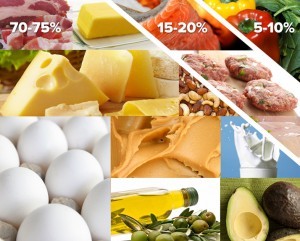Are you familiar with the term ketogenic? In the last few years this has become an increasingly popular nutrition approach used by some for health, weight loss and other reasons. Below is a quick overview on whether this approach will work for you depending on what your goals are.[caption id="attachment_5228" align="aligncenter" width="300"] A ketogenic diet. 5% carbohydrate. 20% protein. 75 % fat.First of all, we should probably define what we mean by a ketogenic diet. This is a nutritional approach that uses a high fat, low fat mix of macros that was initially developed to treat children with epilepsy. Basically when the body experiences a fast glucose levels drops. A particular hormone HSL, hormone sensitive lipase, increases and helps breakdown fat.What Is the Breakdown of Macros?As for the specific mix of carbs, fats and proteins, we're talking about 5% carbs, 75% fat and 20% protein. If these number don't mean too much to you consider that in the literature a VLCD (very low carbohydrate diet) is 40% of calories from carbohydrate. This is 8X the carbs that you would eat on a ketogenic diet. Another way of looking at it is that athletes may sometimes get as much as 70% of the calories from carbohydrates.So this is a vastly different approach from the various other 'low carb' approaches or performance nutrition recommendations.How Much Protein?In terms of protein, we sometimes hear more is better. And the more meathead you are the more you beat your chest and reach for another steak or chicken breast. On a ketogenic diet it's important to keep protein to the 20% threshold because anymore can lead to gluconeogenesis. This is the metabolic process where protein is broken down into its amino acids and then reassembled to make new glucose.When we're talking about eating 75% of our calories from...
